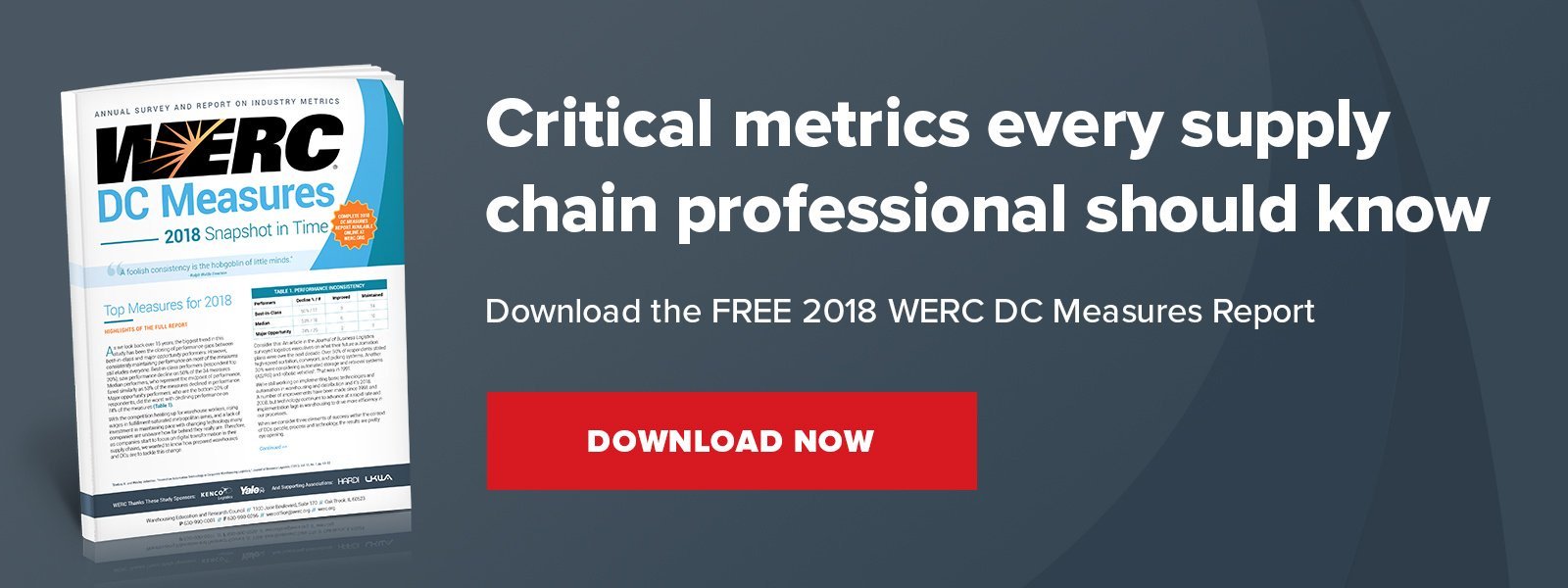
Much like personal resolutions, setting productivity goals for a new year is a smart idea. Aiming for certain metrics for the upcoming year is a practice that typically coincides with annual fiscal data which tends to fall around mid-October to November.
By the beginning of Q4, you should have established the preliminary budget and know your financial limit. This is the best time of the year to review how your 3PL performed in the prior and current year. By evaluating past performance, you can determine realistic warehouse operations goals for the upcoming year.
Determining where to start and what to measure is crucial for gathering useful data and making progress, however––so it's important to devote some thought to it before the literal ball drops so you don't drop the proverbial one in 2018.
Before your 3PL starts creating productivity goals, they will need to anticipate your expectations. This type of planning is usually part of the budgeting and contract renewal process. During this phase, your 3PL should closely communicate with you to determine the following:
- What are your expectations of the 3PL for the upcoming year?
- Are there new ISO certifications or new OSHA or FDA requirements?
- Are there new products being introduced?
- What is the change on the product profile?
- What’s the change of the budget from the prior year?
After understanding your expectations, then your 3PL needs to review their internal measurement system. Are the standard times previously established still current and up to date? Some companies are guilty of letting momentum “poison the well”––meaning the measurements are reused without proper review, a classic "copy-paste" technique.
However, measurements that worked the prior year might not translate as accurate measurements for the next thus losing the business momentum. The standard can fluctuate and can change dramatically due to product profile shift, customer expectations, or new hires.
Since the standard is the foundation of calculating correct productivity, it is important to ensure the standard reflects the current operation. Employees use the standard to compare themselves to enable to ensure that they are working as the company expects them to. It is recommended not only to review the standard time once a year but your 3PL needs to have routine audits to ensure the standard are current.
Once your 3PL understands the financial position and your expectations, your 3PL can start creating productivity goals. All potential goals should be evaluated and questioned using the SMART goal guidelines.
When determining goals, they need to be Specific, Measurable, Achievable, Realistic or result-focused, and Timely.
It is also important to communicate with employees at all levels and obtain constructive criticism to help develop goals. Communication with employees keeps them involved and engaged throughout the process and motivates employees to collectively work to achieve goals.

Which Key Metrics Define Your Warehouse Productivity?
The most common and efficient way to measure productivity is “units per labor hour,” or UPLH. The Unit depends on the type of product being produced. The main question when using UPLH is “How many units can the warehouse produce per employee per work hour?”.
There is a second layer to UPLH. Since UPLH consist of direct and indirect labor, productivity should also be evaluated by comparing the effectiveness of direct vs. indirect. Units per direct labor hour drive from direct operating activities. With the units per direct labor hour data and UPLH information, we can look at the performance of indirect labor and make improvement from the current state.
What Other Operations Metrics Should You Consider?
In addition to UPLH and evaluating the effects of labor on production, your 3PL should examine the state of employees and current processes within the organization. By also considering the Safety, Quality, and Turnover rate of employees, we get a clear view of the whole productivity picture.
If your 3PL is not holding safety in high regard, you might want to dig deeper as to why. A workplace injury can change lives forever. The person who sustains the injury could experience a decrease in their quality of life and the injured employee’s family, friends, and coworkers tend to be adversely impacted.
Your 3PL should emphasize safety to prevent such an adverse situation that can affect so many.
From the productivity perspective, when a safety incident occurs, there is a risk potential of operating loss. There is also a cost to be incurred regarding workers’ compensation for the injured worker(s). All above has a direct impact on your productivity and as they say, “an ounce of prevention is worth a pound of cure.”
Quality also has a strong impact on productivity. When there is a quality issue, for example, a damaged unit or defects, not only do all the labor and time put into those units go to waste, then having to re-route time and labor away from the main production to reproduce units that were not up to quality causes additional impacts on productivity.
Just like how quality affects direct production, when a high turnover rate is present, it means there is a loss of experienced workers. Without experienced workers in your warehouse operations, new hires who fill those positions will require time and training. It takes time and resources to get the new employee to the same level of productivity as the ones who left.
Without having stability in safety, morale, and turnover rate, it’s very difficult to set up effective productivity goals. When performance suffers in these areas, productivity becomes very unpredictable. It is critical to track and identify areas for improvement so the 3PL can perform well in these metrics and be able to create a SMART goal for productivity.
To Sum It All Up
Don't be afraid to look outside your company for guidance and baseline numbers as you prepare for 2018.
Reports are an excellent resource for comparison. Stay on top of industry news, and be aware that for-pay assessments, such as a WERC report, can offer valuable insights untainted by company loyalty or familiarity.
Benchmarks are as important as your goals––having one without the other leaves you in a place without growth. By benchmarking operations with proper warehouse metrics, we keep our competitive edge and continuous improvement for our customers.
While someone will need to take the lead on your productivity efforts, we should always involve workforce, make sure they're inclusive: a single individual's goals are rarely versatile enough to make a lasting and positive difference in a larger company.
Solicit feedback and ideas from your staff at every level, and listen to their suggestions. Remember, it’s important to research new ideas and strategies before you fall behind the pack.


